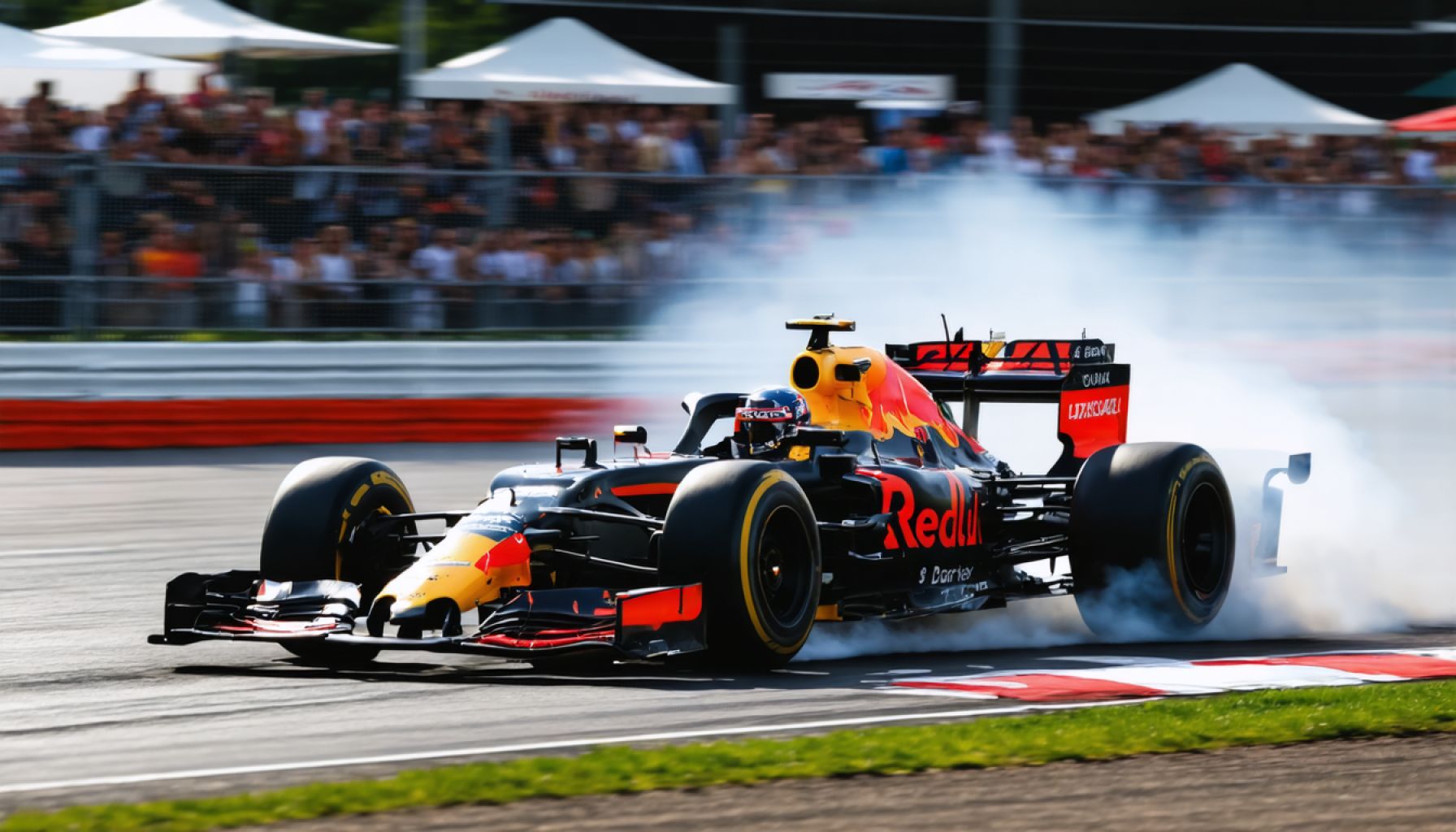- Formula 1 celebrates its 75-year anniversary, marking a journey from its 1950 debut to contemporary cutting-edge designs.
- The Alfa Romeo 158 serves as a milestone in F1 history, paving the way for today’s advanced, aerodynamic vehicles.
- This year’s designs highlight an evolution from front-engine models to sleek, sustainable, high-performance machines.
- Ten new racing cars demonstrate the blend of speed and environmental consciousness.
- The London event celebrates speed, heritage, and innovation, reflecting on the sport’s past glories and future potential.
- The celebration underlines Formula 1’s core essence—the pursuit of perfection and human ambition to continually advance.
A thrilling spectacle unfolds in the heart of London as the world’s premier motorsport celebrates a remarkable 75-year journey. Glittering in the spotlight, Formula 1 revs its engines to showcase a lineage of innovation and horsepower, tracing back to its debut world championship in 1950.
The Alfa Romeo 158, once a mechanical marvel piloted by legends like Juan Manuel Fangio, paved the way for the extraordinary machines of today. This year’s grand reveal unveils cutting-edge designs, illustrating the jaw-dropping evolution from bulky, front-engine beasts to sleek, aerodynamic wonders. Each silhouette reflects technological triumphs and regulatory shifts that have sculpted the sport into a high-octane masterpiece.
Beneath the gleaming exteriors of these ten new racing giants lies a world of nuance, where engineers masterfully blend speed with sustainability. These vehicles not only parade muscular aesthetics but also embody the sport’s commitment to pushing boundaries while echoing environmental consciousness.
Fans worldwide eagerly anticipate the poignant parade down London’s storied streets—a celebration of speed, heritage, and the relentless human spirit that drives innovation. Glimpses of yesteryear blend with visions of the future as the engines roar to life, echoing tales of past glories and future aspirations.
As engines fire up, the true essence of Formula 1—the pursuit of perfection—reminds us of the indomitable human ambition to go faster, further, forever forward. This anniversary marks not just the evolution of machines but celebrates the relentless pursuit of dreams on wheels, capturing the hearts and minds of generations.
Discover the 75-Year Evolution of Formula 1: From Mechanical Marvels to Eco-Friendly Powerhouses
How-To Steps & Life Hacks
Experience Formula 1 Racing: Tips for First-Timers
1. Learn the Basics: Familiarize yourself with the structure of a Formula 1 race season, including how the qualifying sessions and race day work. Attend a local motorsport event to get a feel for live racing.
2. Plan Your Viewing: Choose a race that matches your interest. The Monaco Grand Prix offers glamorous excitement, while circuits like Silverstone provide a rich history in the sport.
3. Use Apps for Enhanced Experience: Download the Formula 1 app for real-time data, live timing, and driver stats to enhance your viewing experience.
4. Attend in Person: If attending, book tickets early. Grandstands and trackside viewing spots offer different experiences, so choose according to your preferences.
5. Bring the Right Gear: Ear protection is essential due to the loud noise of the engines. Also, pack sunscreen, water, and a hat for outdoor events.
Real-World Use Cases
Revolutionizing Automotive Technology
– Formula 1’s innovation in hybrid technology, aerodynamics, and materials is gradually integrating into everyday vehicles. Features like regenerative braking systems and lightweight composite materials are traced back to F1 advancements.
Market Forecasts & Industry Trends
The Future of Formula 1: Sustainability and Expansion
– Sustainability is a primary focus for Formula 1, as evidenced by moves towards carbon-neutral fuels by 2030. The sport is also expanding its audience globally, particularly in emerging markets like Vietnam and the Middle East.
– Industry Trend: Increasing viewership via digital platforms and targeting younger audiences with e-sports and interactive content.
Reviews & Comparisons
F1 Cars: Iconic Designs Compared
– Compare classic models like the Alfa Romeo 158 with modern titans like the Mercedes-AMG F1 W12. The transition from naturally aspirated V12s to hybrid turbo V6 engines reflects major shifts in performance priorities.
Controversies & Limitations
Formula 1: Not Without Criticism
– Despite technological advancements, F1 faces criticism for its environmental impact and the high costs associated with participating in the sport, limiting accessibility for smaller teams.
Features, Specs & Pricing
A Glimpse into Today’s F1 Car
– Modern F1 cars boast V6 hybrid engines, producing over 1,000 horsepower. The technology, materials, and engineering precision drive costs up to $12 million per car, excluding research and development.
Security & Sustainability
Environmentally-Conscious Racing
– Formula 1’s push for synthetic fuels developed in collaboration with oil companies aims to reduce the sport’s carbon footprint. These initiatives promise cleaner combustion engines without sacrificing performance.
Pros & Cons Overview
Understanding the Formula 1 Impact
– Pros: Unmatched automotive innovation, global audience attraction, and cultural integration of sporting excellence.
– Cons: High environmental costs, financial barriers for new teams, criticism over the disparity of competition.
Actionable Recommendations
Get Involved in Formula 1
– Watch Documentaries: “Drive to Survive” on Netflix offers an in-depth look at the teams and drama behind the scenes.
– Stay Updated: Regularly check the official Formula 1 website for news, race schedules, and team announcements.
– Join Online Communities: Participate in forums and social media groups to share insights and connect with fellow fans.
For more information, visit the official Formula 1 website: Formula 1.
